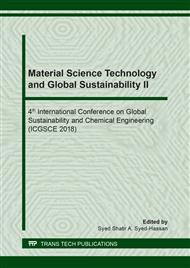p.92
p.102
p.108
p.118
p.127
p.139
p.149
p.158
p.168
Investigating the Risk Posed by Chlorine Incident Release under Wind Rose Effect: An Industrial Case Study
Abstract:
Malaysia is one of the countries that strongly promotes industrial development. Therefore, industrial activities have grown rapidly since the 1980s. However, since the development of the country's industry, the country has experienced several major accident hazards, thus sacrificing many lives, causing assets and environmental destruction. For example, Bright Sparklers explosion incident that occurred on 7th of May 1991 in Sungai Buloh had killed 26 people, injuring more than 100 people and damaging more than 200 residential properties. While at Johor Port Sand Warehouse, a large fire had occurred at Petronas terminal and destroyed three storage tanks and 720,000 liters of petroleum and 240,000 of aviation fuel. This fire has resulted in 100 firefighters. In the latest 2018 incident, Malaysia was shocked by a major fire at Kemaman Bitumen Company. The results of these three insights indicate that a comprehensive analysis needs to be made to assess land use and other risk management decisions. Malaysia is the world’s largest rubber glove producer, therefore, the quantity usage of chlorine is high. As noted by Agency for Toxic Substances and Disease Registry, chlorine is harmful to human body when it is handled improperly. In this paper, a study was conducted to assess the impact of the use of chlorine gas at the rubber glove manufacturing plant. Quantitative risk analysis is used as a tool to prevent major failure in storage, production and transportation of chemicals has been issued. Therefore, this paper investigates the consequences of risk posed by chlorine incident release under wind rose effect at rubber glove manufacturing industry.
Info:
Periodical:
Pages:
127-135
Citation:
Online since:
March 2019
Keywords:
Price:
Сopyright:
© 2019 Trans Tech Publications Ltd. All Rights Reserved
Share:
Citation:


